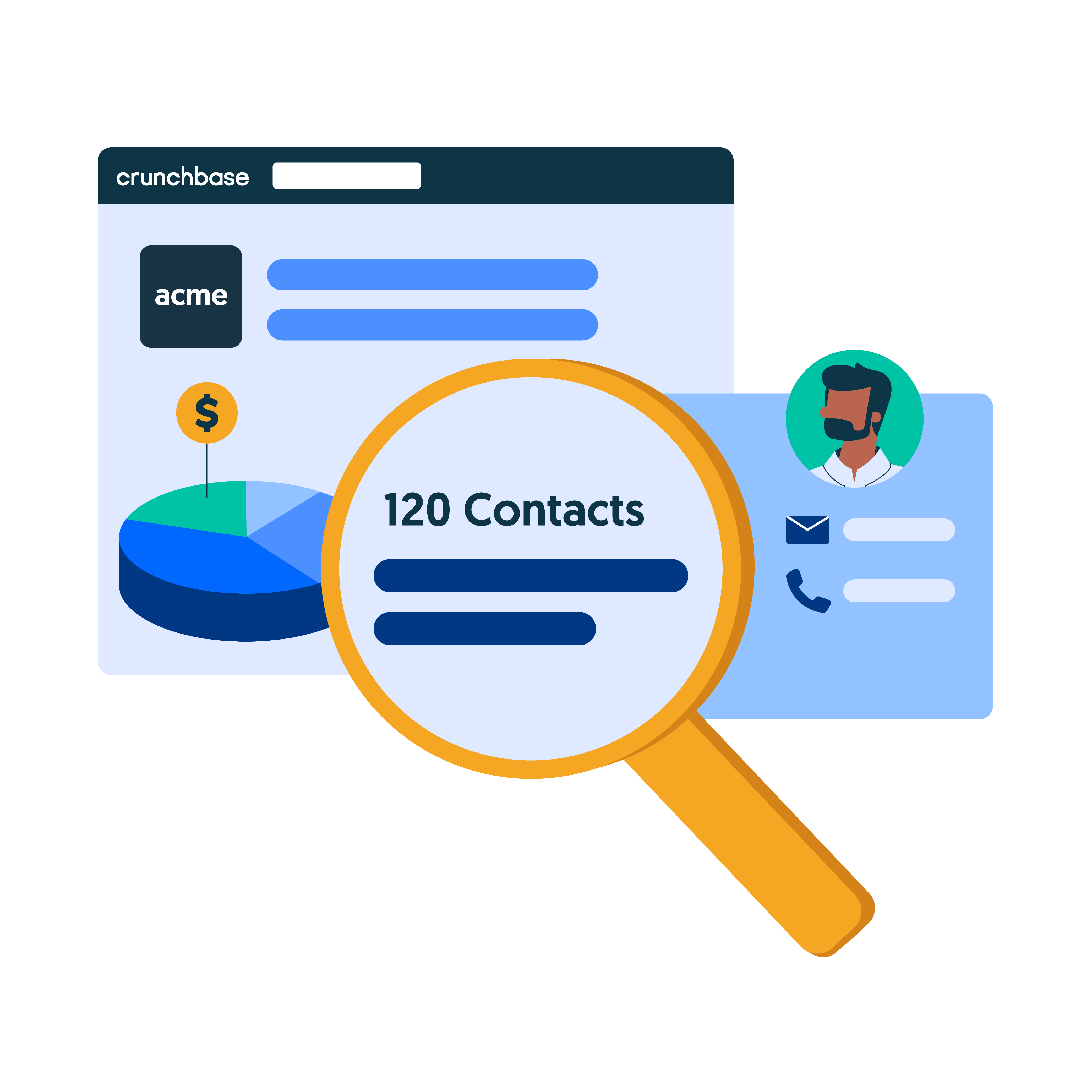Let’s be honest: Buyers prefer to purchase from companies that understand them and their needs. According to research by Salesforce, 84% of business buyers are more likely to make a purchase from sales reps who truly understand their goals.
Consultative selling brings us back to a core principle of sales: You’re a human speaking to another human.
What is consultative selling, and how does it work?
Consultative selling focuses on creating value, building trust with a prospect and exploring their needs before offering a solution. In consultative sales, the salesperson’s first objective is building a relationship; their second is providing the right product for that individual. Consultative selling doesn’t mean you can’t also offer structured information throughout the sales process. But unless the prospect feels understood, no amount of transactional value will win them over.
When consultative sales reps talk to prospective buyers, they are trying to find out:
- What is holding the prospect’s business back;
- How important this issue is to the prospect and their supervisor;
- What could the business be doing if this were no longer a problem;
- Whether what the sales rep brings to the table can help in this initiative; and
- Who or what could help overcome this barrier if not the sales rep’s company.
This line of conversation builds authentic, earned trust. Maybe most crucially, it also allows the sales rep to move the buyer along if they realize that they’re not a good fit, saving everyone valuable time and shrinking the sales cycle.
This strategy works over the long term because it sets up a relationship between seller and buyer with a strong foundation. From here, the selling brand can continue having more engaging and productive interactions.
What are the three key elements of a consultative selling process?
Once you understand what consultative selling is and why this kind of approach works, you can move to the elements that are needed in a consultative selling process:
1. Comprehensive research
To make a consultative selling approach work, you need to do some preparation on the businesses and industries you’re approaching before you talk to your prospects. Get a feel for the prospect’s website, blog, social media and company history. Equip yourself with insights about the ecosystem around the company as well: What are the gaps in the market? What are competitors currently doing? What are the biggest news stories coming out of the industry this week?
Knowledge will allow consultative sales reps to start conversations based on relevant information and customize their approaches. Conversations that come from experience will be immediately more relatable and will show prospects that you’re asking the right questions. That doesn’t mean you have to know everything; a question that shows genuine interest is just as effective.
Conducting comprehensive research—and confirming that your research has led you to a greater understanding of your prospect’s needs—sets you up to offer products or solutions that are tailored to filling the gaps for your prospective buyer.
Search less. Close more.
Grow your revenue with all-in-one prospecting solutions powered by the leader in private-company data.
2. Sales enablement content
Putting in the work to research prospects and ask the right questions equips sales reps to provide content to potential clients that will actually interest them and nudge them closer to signing on the dotted line. This kind of content marketing is called sales enablement because it allows sales reps to offer information to prospects that nurtures them toward a sale, which enables the sales team to close more business more efficiently.
A sales enablement approach is key to consultative selling. It allows sales reps to answer prospects’ questions and be helpful in an efficient way through the use of content.
Sales enablement content can include guest posts that showcase your company’s knowledge and boost credibility. The types of content that sales reps can share during a consultative sales cycle could include:
- Blog posts and pillar blog posts that make deeper dives into topics of interest to your prospects in order to educate and nurture them. These could address your prospect’s concerns; teach them more about your company, its values, its processes, etc.; go more in-depth about your product or service; and provide helpful information that your prospect can share with other decision-makers at their company.
- Whitepapers, or designed long-form content pieces that are typically exchanged for readers’ contact information, that offer deeper knowledge into the industry at large, the key trends at play, or some aspect of your business.
- An educational email drip campaign that gently reengages leads who have gone cold and builds trust with unsure prospects. These emails can include additional educational content that prospects might find valuable or other offers geared toward solving their problems.
- Case studies that illustrate to prospects what real-world results your company has achieved for other clients.
- And more, including worksheets, templates and checklists.
All these sales enablement materials can build stronger relationships with potential clients and encourage them to consider working with your company.
3. A solid follow-up strategy
A key part of a successful consultative selling approach is what happens after the call. All the research you’ve done and the content you’ve provided have built a foundation of trust between you and the prospective buyer. You’re now nurturing a relationship, which means you should continue to engage and follow up.
Make the follow-ups as interesting and caring as your initial interaction. Your follow-up emails should be personal and individualized to the prospect, include helpful information that could ease their frustrations, reflect and anticipate the prospect’s barriers and hesitations, highlight your company’s best side, and include gated content (such as a whitepaper) that the prospect will find useful. Here’s an example of an email that contains many of these elements:
“When we last spoke, you said you were concerned that an external marketing agency wouldn’t have the expertise and relationships necessary to write credibly and move the needle within the manufacturing industry, and you were weighing whether to work with us or build a content team internally. To help you make your decision, here’s the link to a guide we recently published on creating content that resonates with decision-makers in the manufacturing space and the successes our clients have seen with published content. Let me know what other questions you have.”
Conclusion
Get the next call on the books or, at the very least, send an email explaining what will happen next and when you’ll be in touch. If a prospect can see that you mean what you say and will follow through, they’ll likely be responsive to you in return and begin to treat your brand like a trusted friend rather than a stranger who’s just trying to sell them something.
You don’t have to reinvent selling to get closer to potential customers. Consultative selling is about admitting that people purchase based on emotion. And if you can create an authentic feeling of safety and security, and help people learn something when they speak with you, you will be on the right track toward building strong relationships.
This article is part of the Crunchbase Community Contributor Series. The author is an expert in their field and we are honored to feature and promote their contribution on the Crunchbase blog.
Please note that the author is not employed by Crunchbase and the opinions expressed in this article do not necessarily reflect official views or opinions of Crunchbase, Inc.





